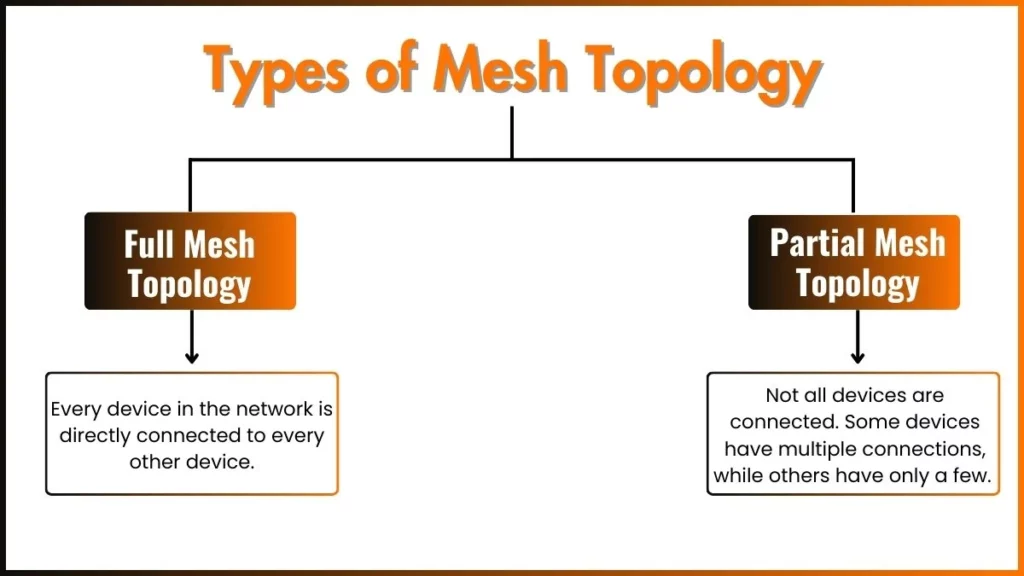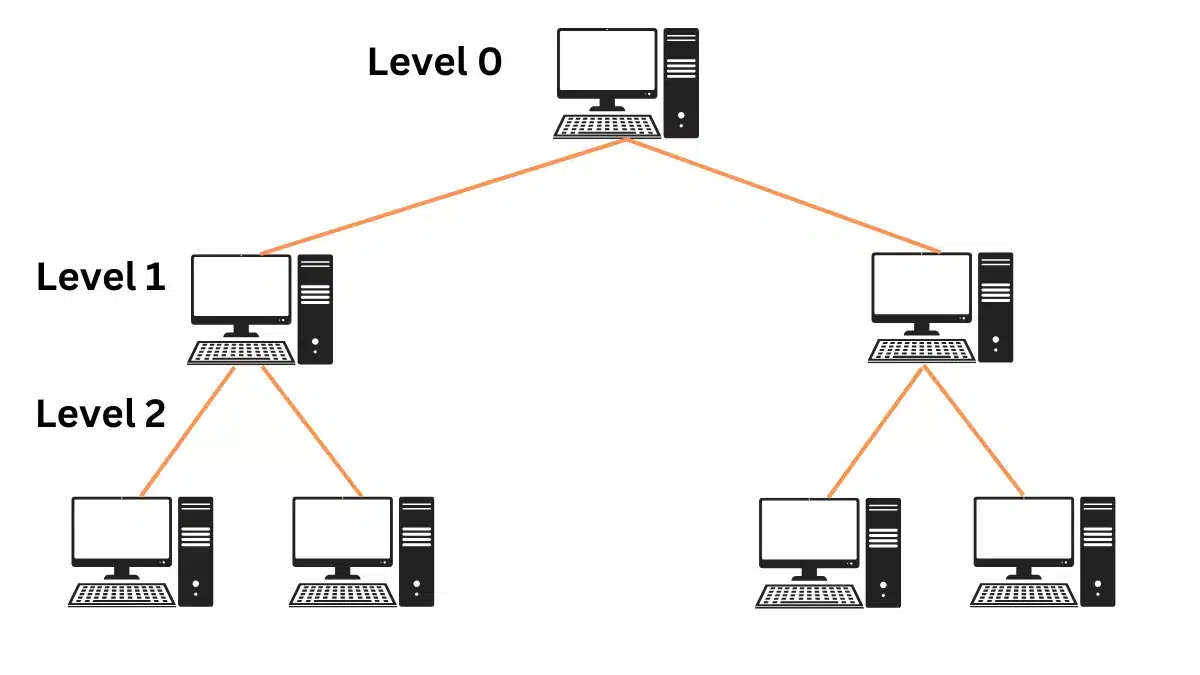Types of Mesh Topology -Comparison, Importance
Mesh topology is a network where devices are connected to each other. It is known for its reliability and redundancy. There are two main types of mesh topology: Full Mesh Topology and Partial Mesh Topology.
Also, read a detailed article on the Difference between Full Mesh and Partial Mesh topology for better understanding.

1. Full Mesh Topology
In a full mesh topology, every device in the network is directly connected to every other device. This means that if there are 5 devices, each device will have 4 connections. It is like a group of friends where everyone knows and talks to everyone else directly.
How it works
- Each device has a direct link to all other devices. For example, if Device A wants to send data to Device D, it can send it directly without passing through other devices.
- Data can travel through multiple paths. If one path is busy or broken, the data can take another path to reach its destination.
Example of Full Mesh Topology
Full mesh topology is used in critical systems like banking networks or military communication systems. These systems need high reliability and no downtime.
For example, in a bank, if one connection fails. The network must still work to ensure transactions are completed without interruption.
2. Partial Mesh Topology
In a partial mesh topology, not all devices are connected. Some devices have multiple connections, while others have only a few. It is like a group of friends where some people know everyone, but others only know a few people.
How it works
- Only the most important devices are fully connected. For example, in a school network, the main server may be connected to all computers, but the computers are not connected.
- Less important devices have fewer connections. For example, a printer may only be connected to a few computers.
Example of Partial mesh topology
Partial mesh topology is used in small office networks or smart home systems. These networks do not need the high reliability of full mesh but still benefit from some redundancy. For example, in a smart home, the main hub may be connected to all devices, but the devices are not connected.
Comparison of Full Mesh and Partial Mesh Topology
| Feature | Full Mesh Topology | Partial Mesh Topology |
| Connections | Every device is connected | Only some devices are connected |
| Cost | High | Low to moderate |
| Reliability | Very high | Moderate |
| Complexity | High | Low to moderate |
| Use Case | Critical systems (e.g., banks, military) | Small networks (e.g., offices, homes) |
Why Are These Types Important?
- A full mesh is ideal for networks where reliability is critical. For example, in a bank, if the network fails, customers cannot withdraw money or make transactions. A full mesh ensures that the network keeps working even if some connections fail.
- A partial mesh is better for smaller networks where cost and simplicity matter. For example, in a small office, it is not necessary to have every computer connected to every other computer. A partial mesh provides a balance between cost and reliability.







Leave a Reply